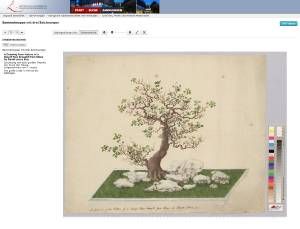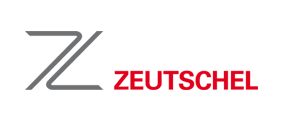Joining together in achieving ambitious goals
Gottfried Wilhelm Leibniz Library Digitised with the Open Source Solution Goobi

"The positive experience that many institutions in the world of libraries have gathered with Goobi in recent years tickled our interest", explains Dr. Reinhard Laube, Head of the Manuscripts and Old Prints Department at the GWLB.
Laube's words indicate that the appeal of an open source project such as Goobi by far exceeds the costs saved in terms of license fees. "When we look at Goobi, we see a community at work, one synonymous with continuous development of the digitisation platform and persistence in the formats it offers – on the level of professional discussions relating to specific library matters. There is also a high degree of investment security, as the use of open source products can most usually continue when commercial software providers offer a cost-intensive switch to new license products due to technological developments", Laube argues.
An enquiry put forward by the Portal "Kulturerbe Niedersachsen" - Cultural Heritage Lower Saxony -(www.kulturerbe.niedersachsen.de/), to enable access to certain inventories provided GWLB with the opportunity to put Goobi's practical suitability to the test within the framework of a specific pilot project.
The courage to engage in pioneering work
As Dr. Reinhard Laube explained, the aim was to evaluate the extent to which Goobi methods and functions would support highly-specific procedures, also. In the event of a positive assessment, the plan was to lay a foundation of structures and know-how to enable the introduction of Goobi as a digitisation tool within future GWLB projects.
The defined task was to digitise selected manuscripts and prints from the Royal Garden Library of Hanover Herrenhausen. The total volume of digitised inventories within the system currently encompasses approximately 20,000 images.
"Among others, there were particular challenges relating to the specification of standard operating procedures for manuscripts, aimed at the consideration of particular requirements in the handling of unique materials. It was also important to develop solutions for linking with our existing manuscript database and handling large-format illustrations", explains Dr. Reinhard Laube.
Adherence to pivotal librarian standards prompted the project managers to venture out into 'virgin territories' in many aspects of the technologies sourced. The search for opportunities to integrate standard data within the framework of the digitisation was among the tasks earmarked for the future.
Cooperation with commercial IT service providers proved most beneficial in the successful and timely implementation of the project. "We have widespread advantages involved in working with a service provider. It does not tie down our own staff in order to integrate Goobi; there is training for the library staff working with Goobi; installation of later versions and in particular individual support within the framework of requirements relating to specific aspects of the collection", Dr. Reinhard Laube explains.
Trust in expertise
Two service providers were commissioned as part of a tender procedure. The scanning service provider, MSV Systemhaus from Peine, offers a wealth of experience in the library world and was charged with the digitisation. A large proportion of this work was conducted 'in-house' due to the constraints of preserving the collection. Zeutschel, the scanner specialist and solutions provider, lent support to our own project team under the auspices of the qualified library manager Elea Rüstig in the implementation and configuration of the Goobi platform.
"Zeutschel is an established name in the world of digitisation and an active member of the Goobi Community. This tipped the balance", says Dr. Reinhard Laube with regard to two decisive selection criteria. As it transpired, the broad range of Goobi services, starting with the support and installation services and moving on to the development of individual interface modules, through to consulting and hosting services, satisfied all of the required preconditions for a successful project fulfilment.
Learning from specialists
In concrete terms, the Goobi experts at Zeutschel led the way in customising the production interfaces, setting up the Goobi workflow templates, integrating Goobi within the GWLB catalogue and in establishing the standard operating procedures and collections. Zeutschel also coordinates hosting of the application on the Common Library Network (GBV) servers.
Michael Lütgen, Sales Director at Zeutschel Software Solutions, states that cooperation with the GWLB represents a paradigm of win-win situations in this kind of cooperation. "Firstly, the GWBL project team was able to benefit from our extensive experience with Goobi; secondly, we were in a position to acquire a ream of new and specific insight over the course of the project that will flow into the development of new Goobi updates and will hence be a boon to the community as a whole", Michael Lütgen confirms.
Facing the future on a solid foundation
Following a project period lasting almost one year, the Goobi-based GWLB digital archive went 'online' parallel to, and just in time for, the launch of the 'Cultural Heritage Lower Saxony' portal in April 2012.
"We now have at our disposal a 'foundation' for the successive digitisation of further library inventories that is as stable as it is flexible", says Dr. Reinhard Laube. A follow-up project is already in the production phase, involving digitisation for sections of Gottfried Wilhelm Leibniz's library of work. Furthermore, Goobi is also used step for step to digitise central objects in the library's standard operations, hence providing a rapid response to user wishes.
Coming years will see an increase in staff levels within GWLB, targeted at offering greater or continual expansion with regard to in-house Goobi expertise. The objective is to move from being a more 'passive' member of the constantly growing Goobi Community to becoming 'active', introducing project experience and our own project results into the fellowship of developers.
About the Gottfried Wilhelm Leibniz Library (GWLB)
The inventories have been structured along the lines of a university library since 1676, when Duke Johann Friedrich zu Braunschweig und Lüneburg placed the running of library affairs in the hands of the philosopher, Gottfried Wilhelm Leibniz. Acquisitions are now focused on the core fields of history, philosophy, classical philology, theology and jurisprudence. As an archiving library, the Gottfried Wilhelm Leibniz Library collects and preserves all printed material published in Lower Saxony. Furthermore, the library nurtures the entire literature published on the geography, history and civilisation of the federal state as completely as is possible. The Gottfried Wilhelm Leibniz Library (GWLB) holds almost 2 million media units, the majority of them books. These include incunabula, that is books from the early period of printing, roughly 12,500 titles from the 16th century, 62,500 from the 17th, 65,000 from the 18th, and approx. 134,000 titles from the 19th century. There are also 4,373 manuscripts and various special collections. Over 5,700 contemporary journals are kept in stock.
http://www.gwlb.de/
http://digitale-sammlungen.gwlb.de/goobit3/
